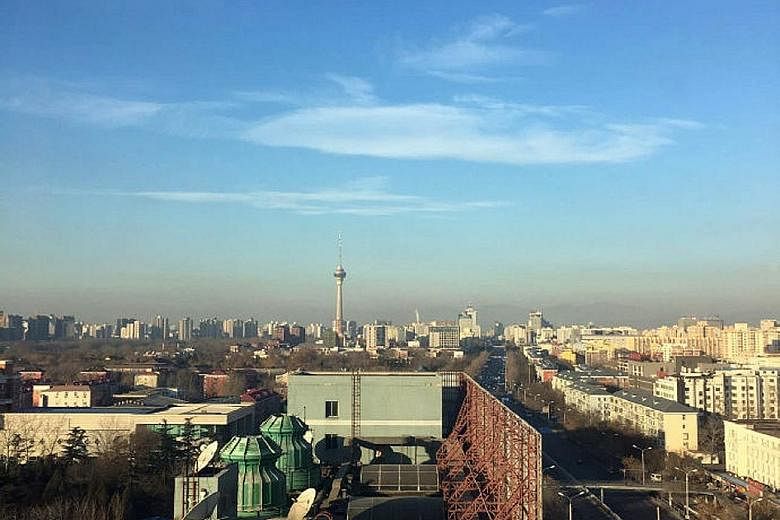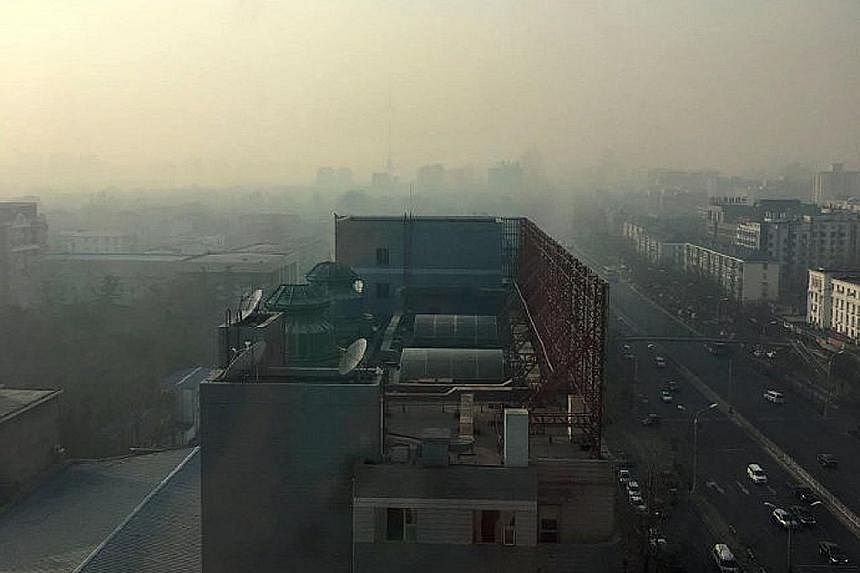BEIJING • Schools have been suspended. Work at all construction sites halted and half of the private car population ordered off the roads.
These measures, among others, kicked in yesterday across more than 20 cities in northern China as millions braced themselves for the country's first smog red alert this year.
Red alerts - the highest possible air pollution warning in a four-tier system - are issued in China when the air quality index, a measure of pollutants, is forecast to breach 200 for more than four days in succession, surpass 300 for more than two days, or overshoot 500 for at least 24 hours.
Starting from 8pm yesterday, severely high levels of smog will blanket many parts of northern China for five days. The red alert will run until Wednesday, according to the state media.
Beijing and Tianjin issued red alert warnings for their cities on Thursday, while 21 other cities in the neighbouring provinces are advised by the Ministry of Environmental Protection to follow suit. The so-called Jingjinji region spanning Beijing, Tianjin and Hebei province is home to 130 million people.
China issued its first-ever red alert for smog in Beijing, the capital, last December, after adopting a colour-graded warning system in a crackdown on environmental degradation caused by decades of breakneck economic growth.
Smog normally worsens in winter as China's largely coal-fired urban heating systems are activated in the northern regions. Unfavourable weather conditions this year have led to a heavy build-up of pollutants.
Meteorologists have predicted that this will be China's coldest winter since 2012.
Environmental group Greenpeace urged the government in a statement yesterday to "strictly punish" factories and plants in Hebei that flout regulations, as it said they have often done during past alerts. Hebei is China's biggest steel-producing province.
A red alert will require heavy polluting industries to cut back or halt production.
Factories in cities with red alerts must reduce emissions by 40 per cent, while those under orange alerts have to curb them by 30 per cent, the provincial environmental bureau said on Thursday.
According to the World Health Organisation, which has stricter guidelines than most countries, yearly averages of PM2.5 levels should not exceed 10 micrograms per cubic m.
Mr Luo Yi, head of the Ministry of Environmental Protection's environmental monitoring bureau, said the average PM2.5 level last month across the Beijing-Tianjin-Hebei region was 102 micrograms per cubic m.
The environmental authorities have warned that the latest episode of smog will be the worst this year.
REUTERS, XINHUA


